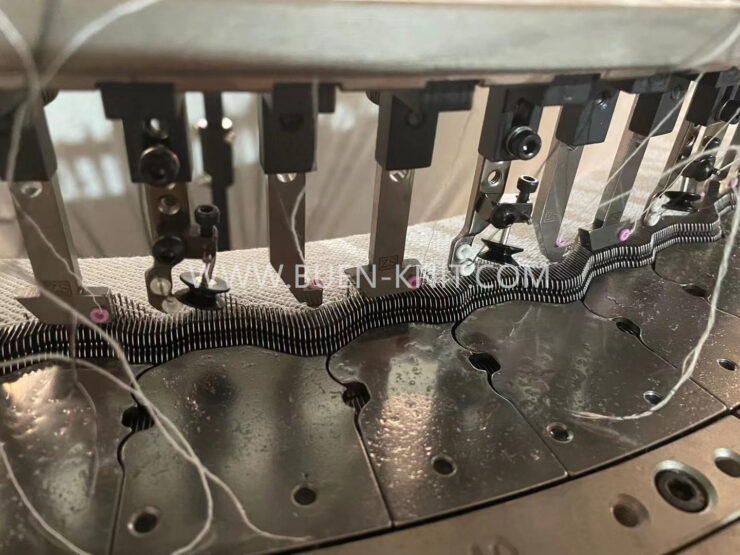knitted structures are progressively built-up from row after row of intermeshed loops. The newly-fed yarn is converted into a new loop in each needle hook. the needle then draws the new loop head first thrugh the old (fabric) loop, which it has retained from the previous knitting cycle. The needles, at the same time, release,(cast-off or knock-over) the old loops so that they hang suspended by their heads from the feet of the new loops whose heads are still held in the hooks of the needles.
A cohesive knitted loop stucture is thus produced by a combination of the intermeshed needle loops and yarn that passes from needle loop to needle loop.
the knitted loop structure may not always be noticeable because of the effect of structural fineness, fabric distortion, additional pattern threads or the masking effect of finishing process. However, unless the intermeshing of the loops is securely achieved by the needles receiving new loops of yarn into their hooks before the old loops are “cast-off”, and the ground structure is not fractured during finsihing or wear, a breakdown or separation of the structure will result.
The properties of a knitted structure are largely determinded by the interdependence of each stitch to its neighbours on either side and above it.
Knitted loops are arranged in rows, roughly equivalent to the weft and warp of woven structures. These are termed”courses” and “wales” respectively.









